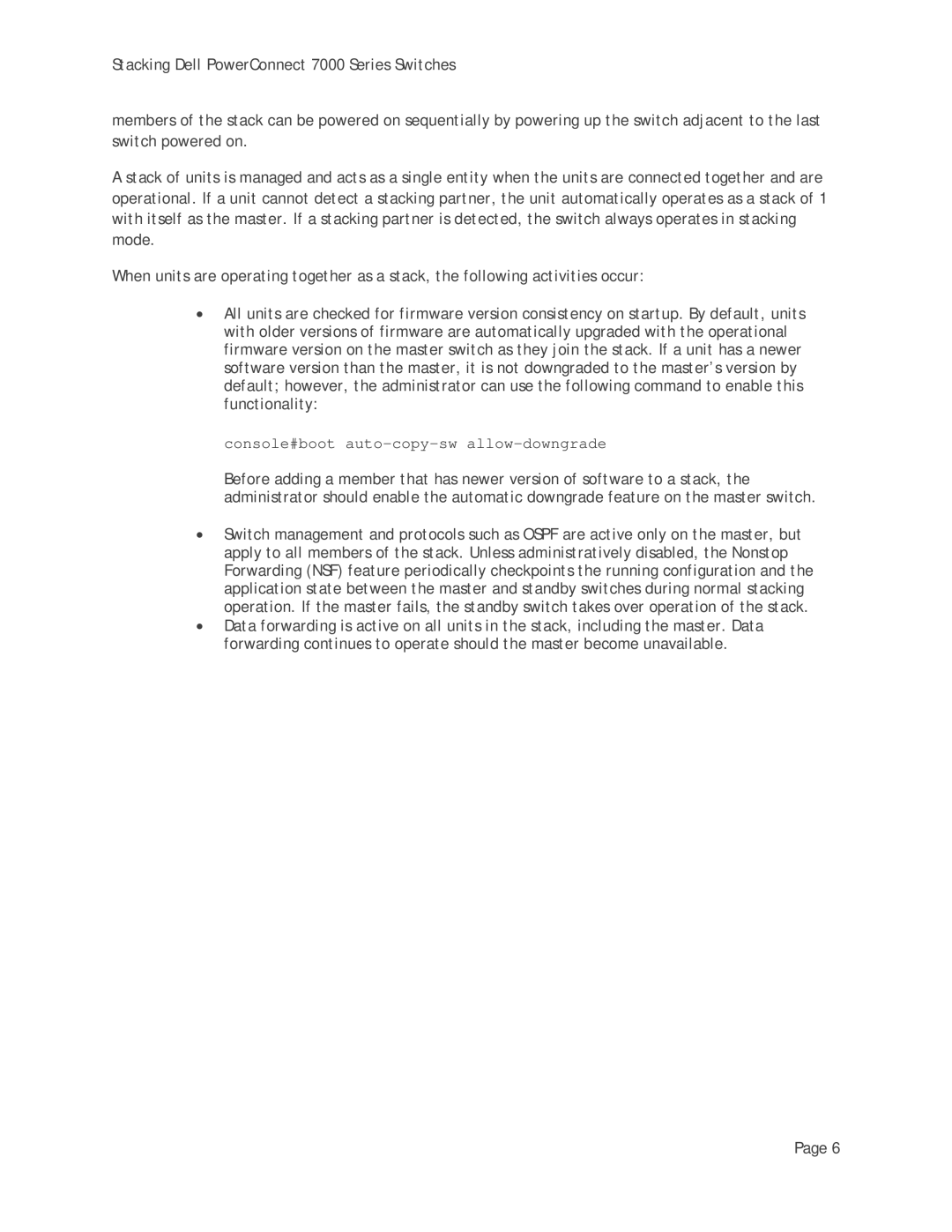Stacking Dell PowerConnect 7000 Series Switches
members of the stack can be powered on sequentially by powering up the switch adjacent to the last switch powered on.
A stack of units is managed and acts as a single entity when the units are connected together and are operational. If a unit cannot detect a stacking partner, the unit automatically operates as a stack of 1 with itself as the master. If a stacking partner is detected, the switch always operates in stacking mode.
When units are operating together as a stack, the following activities occur:
•All units are checked for firmware version consistency on startup. By default, units with older versions of firmware are automatically upgraded with the operational firmware version on the master switch as they join the stack. If a unit has a newer software version than the master, it is not downgraded to the master’s version by default; however, the administrator can use the following command to enable this functionality:
console#boot auto-copy-sw allow-downgrade
Before adding a member that has newer version of software to a stack, the administrator should enable the automatic downgrade feature on the master switch.
•Switch management and protocols such as OSPF are active only on the master, but apply to all members of the stack. Unless administratively disabled, the Nonstop Forwarding (NSF) feature periodically checkpoints the running configuration and the application state between the master and standby switches during normal stacking operation. If the master fails, the standby switch takes over operation of the stack.
•Data forwarding is active on all units in the stack, including the master. Data forwarding continues to operate should the master become unavailable.
Page 6
